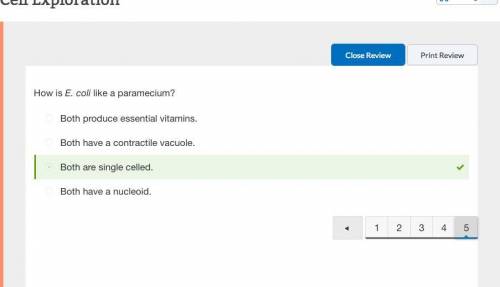

Answers: 1


Other questions on the subject: Biology


Biology, 22.06.2019 02:00, karlaaag
Which statements describe resources? one of the factors people use when deciding where they will live is the availability of resources. renewable resources have little value for people. resources are unevenly distributed throughout the world. energy is the world resource which has the highest use. the use of nonrenewable resources has decreased in recent history. the use of resources is evenly distributed throughout the world. the world's oil supply will last for the next forty years if its use continues as expected.
Answers: 3

Biology, 22.06.2019 06:00, reneethacker20p8wdgn
One function of the immune system is to attack the foreign cells to protect the body. in organ translate , the body recongnizes that the new organ is made of foreign cells. wha kind of medicine would you give a patient to increase the chances of transplate success
Answers: 1

Biology, 22.06.2019 06:50, Shaylaharrison15
The kidney filters potentially toxic substances in the blood, and thus “clears” the blood of those substances. this clearance function is dependent upon and proportional to the diffusion gradient of the substance across filtering capillaries, i. e. if the concentration of the substance is doubled, twice as much will be cleared from each ml of blood that is filtered. suppose that the body produces a constant amount of a substance x per unit of time. the kidneys eliminate substance x at a rate directly proportional to the concentration of the substance and the volume of blood cleared each minute (c): elimination = c × [x], where [x] is the steady-state concentration of substance x. imagine an individual with an initial concentration of x equal to [x]0 who develops kidney disease. her baseline clearance c0 drops to one half of the original (½c0). what is the new steady state concentration of x? (for simplicity, assume that substance x is 100% filtered by the kidney).
Answers: 1
You know the right answer?
How is e. coli like a paramecium? a. both produce essential vitamins. b. both have a nucleoid. c. b...
Questions in other subjects:





Computers and Technology, 10.07.2019 00:30





Mathematics, 10.07.2019 00:30




